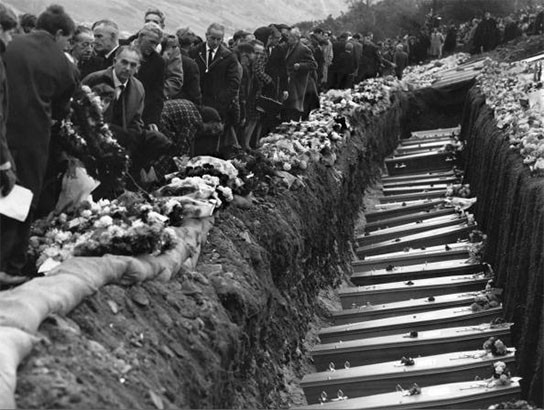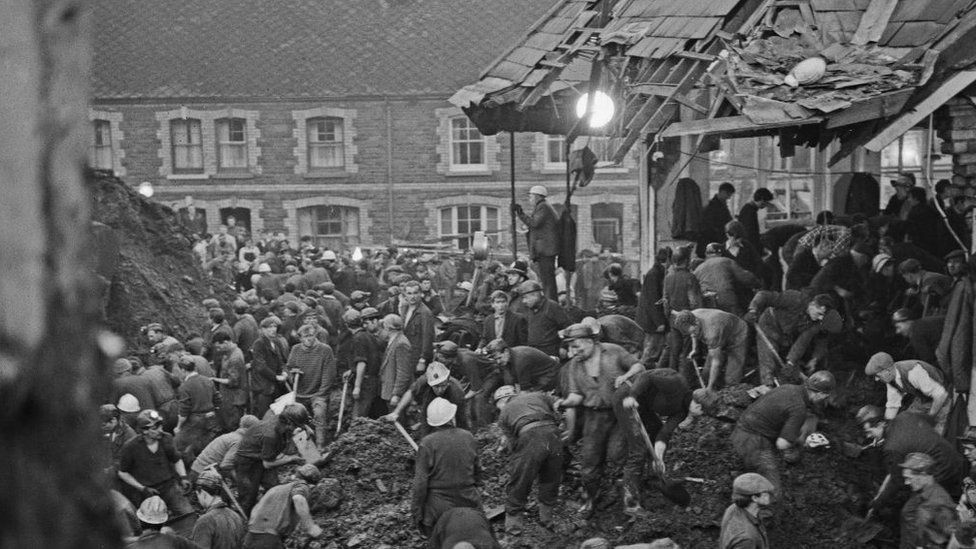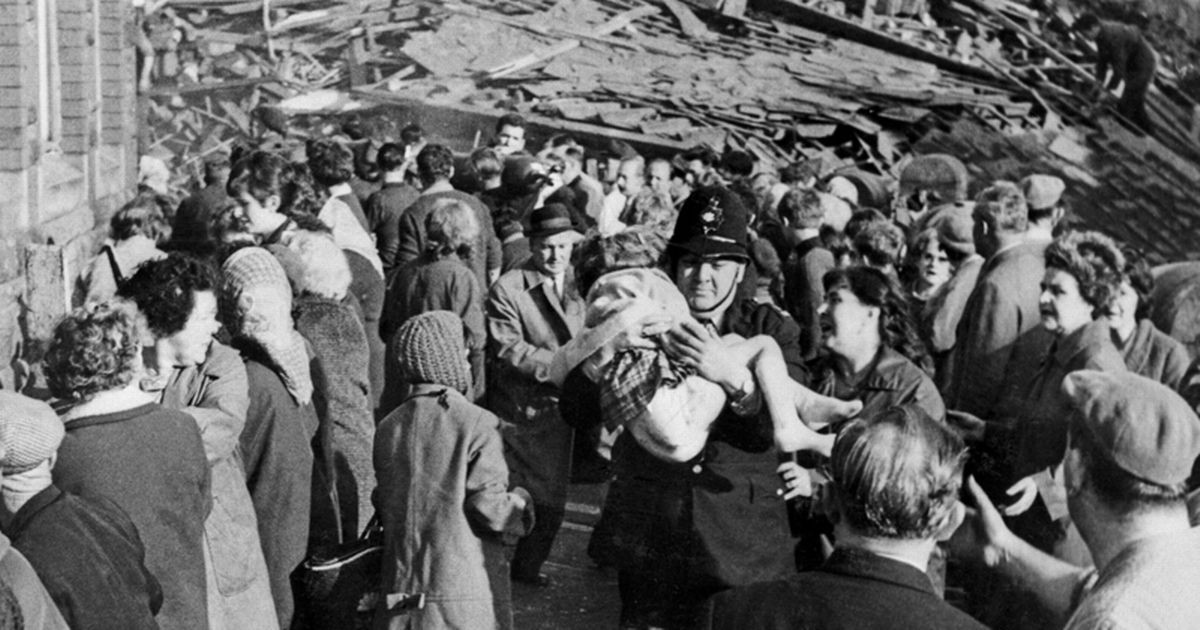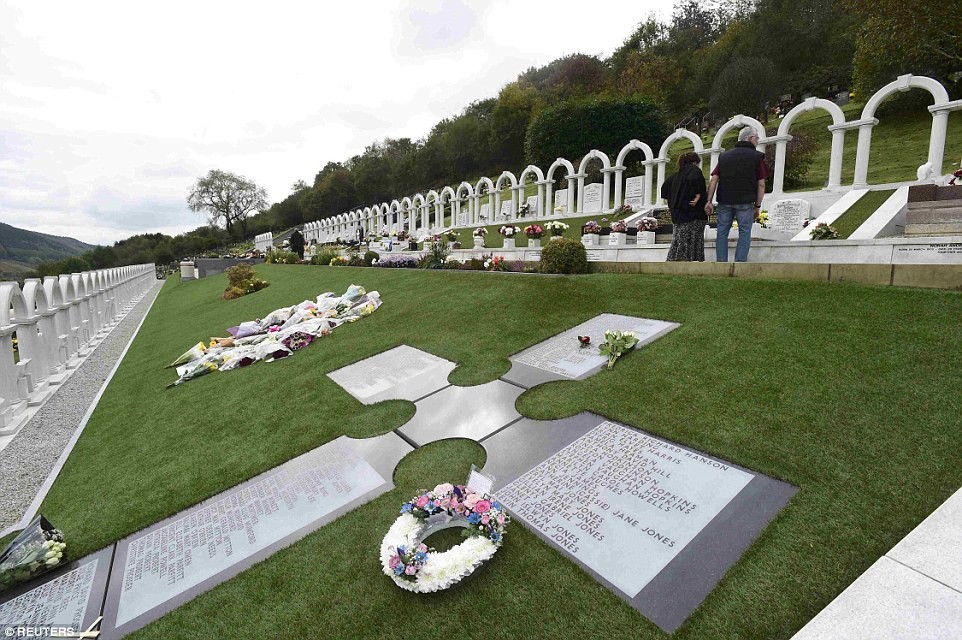
Fifty-Eight years ago today, tragedy struck the small Welsh mining town of Aberfan in a horror that shook the nation.
On 21 October 1966, a waste heap of 300,000 cubic yards, some 111 feet high, culpably placed over an underground spring and, thanks to recent heavy rain, had become oversaturated and highly unstable. At 07:30 workers discovered that it had started to slide. Although they opted not to proceed with the day’s tip operation, they were unable to prevent further slippage, and at 09:15, a “glistening black avalanche” of liquefied coal slurry began hurtling down toward the village below.
Down the valley, directly in the path of the avalanche of filthy black coal waste, lay the Pantglas Junior School where, just a few minutes before, its 240 students had walked to class in the rain, focused on their plans for the coming half-term holiday. Following an early afternoon assembly, they would go home to start enjoying themselves. Instead, 116 of them would be dead, along with 28 adults, teachers and residents of nearby homes.

A fireman later told of finding rising waters threatening to engulf a 10-year-old boy, caught in the sludge as he was walking to school. “The water was rising and coming up to his head. We thought he might drown.” But a group of firemen managed to lift the wall that had collapsed on him, and he became one of the few to successfully escape the debris.
Five students survived the disaster thanks to the heroism and quick thinking of dinner lady Nansi Williams, who sacrificed herself by shielding them from the sludge with her own body. Another staff member died while cradling five of his pupils. None of the students in his class survived.
One survivor, then eight-years old, later described what had happened to him. He had just started the day’s maths lesson when he heard an ominous rumble. “The next thing I remember was waking up. My right foot was stuck in the radiator and there was water pouring out of it. My desk was pinned against my stomach and a girl’s head was on my left shoulder. She was dead.”
Over the next hour and a half he struggled to breathe as his classmates, trapped under tons of liquefied coal waste, cried out around him. With every passing minute, he said, “They got quieter and quieter, … buried and running out of air.” Fortunately, someone spotted a tuft of his hair amid the rubble and a fireman used a hatchet to free the young boy from beneath his desk, then passed him along to safety via a human chain, the tenth child rescued that morning. He would be the last.

Later, parents walked along the rows of corpses laid out on pews in the Chapel, lifting blankets covering the bodies until they found their child. Those whose children hadn’t yet been found repeated the ritual daily, queuing outside the chapel “mother relieving father, to keep their place outside waiting in the rain.”
I was only twelve at the time so don’t remember that much about it. But I have an abiding memory of my mother, from a coal-mining family, crying as she watched it on television. This shocked me greatly, as I had never seen her cry before. I also remember something of the great wave of anger and disgust that swept through mining communities against the government-owned National Coal Board (NCB) when it became clear that they were to blame for the tragedy.
It turned out that the NCB had long known that the heap was potentially dangerous and had done nothing about it, even threatening to close the mine and throw the men out of work if further complaints were made. Several years earlier, the local council had contacted the NCB to express concerns regarding the spoil tip. “I regard it as extremely serious as the slurry is so fluid and the gradient so steep that it could not possibly stay in position in the wintertime or during periods of heavy rain,” one engineer had written in a June 1963 letter.
The NCB not only ignored these complaints, but implicitly threatened the town’s livelihood, the BBC reporting that it had made its intentions clear: “Make a fuss and the mine would close.” In the subsequent Inquiry, the NCB’s chairman, Lord Robens - trade unionist, socialist and Labour politician – shamelessly and disgracefully denied all wrongdoing. He lyingly attributed the accident to a previously unknown springs located below the spoil tip and refuted testimony proving the tip had shown signs of slipping in the years prior to the disaster, both claims odds with the truth.
Robens had taken the post in 1961 and stayed in position till 1971. When he started there were 698 coal mines and 583,000 miners in Britain. When he left there were only 292 pits employing less than half that number, 283,000, having closed far more pits and put far more miners out of work than Margaret Thatcher ever did. But of course, that was under Labour governments, and union leaders were looked after so no fuss was made. Robens, in a speech to the NUM in 1963, had said "If we are going to make pits safer for men we shall have to discipline the wrongdoer. I have no sympathy at all for those people—whether men, management or officials—who act in any way which endangers the lives and limbs of others." But as usual with socialists, they are only words and never apply to them.
The Tribunal investigating the Aberfan disaster published its findings on August 3, 1967, concluding that the sole party responsible for the tragedy was Roben’s National Coal Board. In 1969 Robens was appointed by Labour Minister Barbara Castle to Chair a Committee on Workplace Health.
In true British Establishment fashion the Inquiry was a cover up. No politician was blamed and no NCB staff were demoted, sacked or prosecuted as a consequence of the disaster, or for untruthful evidence given to the Tribunal (one notably unsatisfactory witness was actually promoted). Needless to say Robens and the board of the NCB retained their positions. Equally inevitably, the costs were passed on to the taxpayer, with the NCB handing out £160,000 of their money in compensation.

Following the Tribunal’s conclusions, Robens wrote to the Minister of Power, Richard Marsh, offering his resignation. Harold Wilson and Marsh refused to accept it and, according to a senior member of staff at the Ministry of Power, who briefed Marsh on the matter, the fact that Robens was "taking the coal industry through a period of painful contraction without big strikes" and the strong support for him within the union movement were crucial to the decision to retain him. Leo Abse MP spoke for many saying: ..."when I saw what I regarded as the graceless pavane danced by Lord Robens and the Minister, as the Chairman of the Coal Board coyly offered his resignation and, equally coyly, the Minister rejected the offer, I thought that it was a disgraceful spectacle."
Papers released in 1997 under the thirty-year rule show that Robens worked with the NUM to gather support, then agreed to the wording of a letter from Marsh refusing Robens' resignation before offering his supposed resignation. In an interview broadcast in 2006, Marsh, after talking about a discussion with Robens, said: We went through this and I said "Well, you send me in your resignation, and I will send you back a letter saying 'quite understand it, but I don't accept it'"
This sordid tale doesn’t end there. In the months following the disaster, ordinary people donated £1,750,000 - £20 million in today’s money. But little of it actually reached the villagers whose lives had been devastated by the tragedy. The commission in charge of distributing the funds was forced to allocated £150,000 toward the removal of the town’s remaining coal tips after the NCB refused to cover the costs. The fund’s managers actually considered distributing compensation on the basis of how close parents had been to their deceased children. Such is the low class of the British Establishment.
